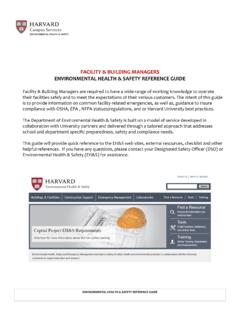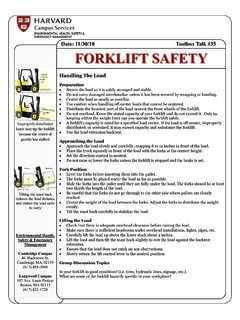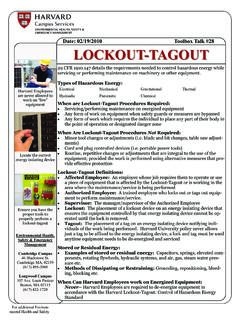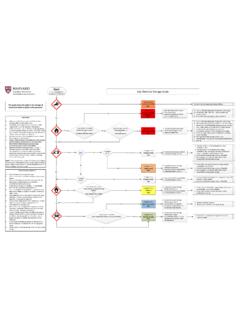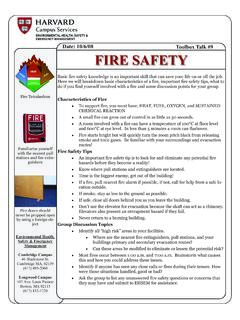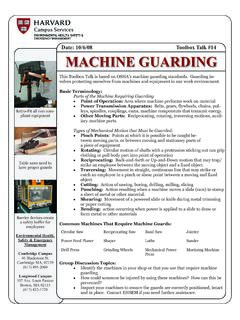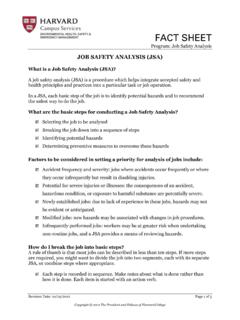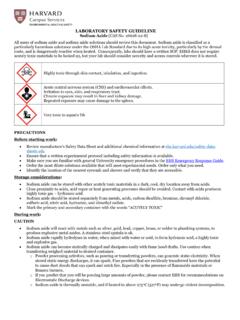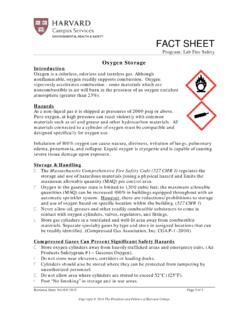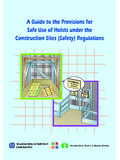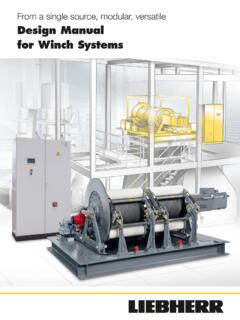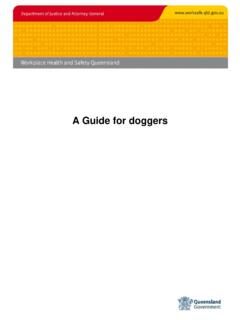Transcription of Standard: Cranes & Hoists CRANE & HOIST PRE-USE …
1 FORM Standard: Cranes & Hoists Revision Date: 08/20/2014 Page 1 of 3 Copyright 2014 The President and Fellows of Harvard College CRANE & HOIST PRE-USE INSPECTION CHECKLIST General Damage Inspect chains, slings, wires hooks and other components of the CRANE / HOIST for general damage, wear and tear. Tagged Check that the CRANE or HOIST is not tagged with an out-of-order sign. Control Devices Test run each motion to ensure they are working properly. Brakes Check for excessive drift in each motion of the CRANE and that stopping distance is normal. Reeving Check sat the wire rope is properly reeved and that rope parts are not twisted about each other. Limit Switches Check that the upper limit device stops the lifting motion of the HOIST load block before striking any part of the HOIST or CRANE . Oil Leakage Check for any sign of oil leakage on the CRANE and on the floor beneath the CRANE . Unusual Sounds Check for any unusual sound from the CRANE or HOIST mechanism while operating the CRANE or HOIST .
2 Warning & Safety Labels Check that warning and other safety labels are not missing and are legible. Housekeeping & Lighting Check area for accumulation of material to prevent tripping or slipping. Also ensure there is plenty of lighting in the area. Hook and Chain Assembly - Monthly Inspection Once a month, complete the following tasks. When completed, initial and date the CRANE s/ HOIST s inspection tag. Hook Check for damage, cracks, nicks, gouges, deformations of the throat opening, wear on the saddle or load bearing point, and twist. Refer to the manufacture s manual. Hook Latch Check for proper operation. If a there is a gap between the end of the latch and the hook, then check the hook for elongation. Wire rope Check for broken wires, broken strands, kinks, and any deformation or damage to the rope structure. HOIST Chain Check for cracks, nicks, gouges, wear and stretch. Check that the chain is in the upper and lower sprockets and in the chain guide. See additional guidance for monthly inspections on the reverse side FORM Standard: Cranes & Hoists Revision Date: 08/20/2014 Page 2 of 3 Copyright 2014 The President and Fellows of Harvard College HOOK DEFICIENCIES If hook throat opening has increased by 15%.
3 Load bearing point has been worn by 10%, the hook must be replaced. Inspect hook tip. If it is twisted by 10 degrees or more the hook must be replaced. Check for excessive damage from chemicals and for deformation and cracks. Check for and replace damaged, inoperative, or missing hook latches. WIRE rope DEFICIENCIES NOTE! TO AVOID INJURY, WEAR LEATHER GLOVES WHEN INSPECTING WIRE ROPES rope distortion such as kinking, crushing, unstranding, birdcaging, main strand displacement, or core protrusion. General corrosion, heat damage and broken or cut strands. Number, distribution, and type of visible broken or cut wires. Reduction of rope diameter due to loss of core support, internal or external corrosion, or wear of outer wires. Corroded, cracked, bent, worn, damaged, or improperly applied end connections. Wire rope pull through of end connection. Clamps that recommend a specified torque on the clamp bolts. rope lubrication, if recommended. FORM Standard: Cranes & Hoists Revision Date: 08/20/2014 Page 3 of 3 Copyright 2014 The President and Fellows of Harvard College CHAIN DEFICIENCIES Select an unworn and unstretched length of chain ( , at the slack end of the chain).
4 The number of links selected must be an odd number and should be approximately 12 inches to 24 inches in length. Measure the gauge length of the unworn and unstretched length of chain selected by use of a caliper-type gauge. Measure the gauge length of the same number of links in a used section of the load chain. Replace the chain if the used gauge length is 2-1/2% longer than the unused gauge length for manually-operated Hoists or is 1-1/2% longer than the unused guard length for power operated Hoists .
